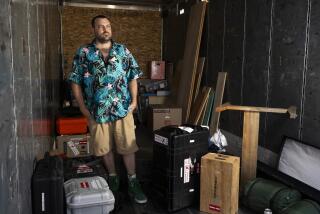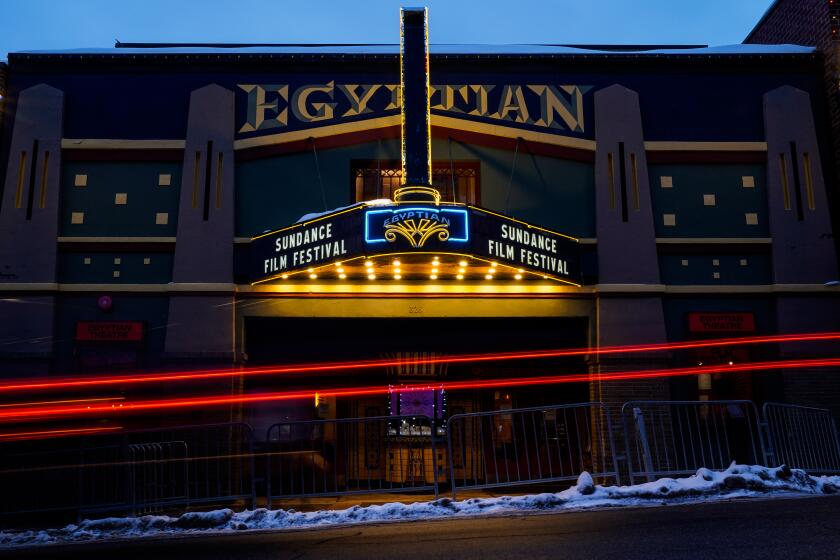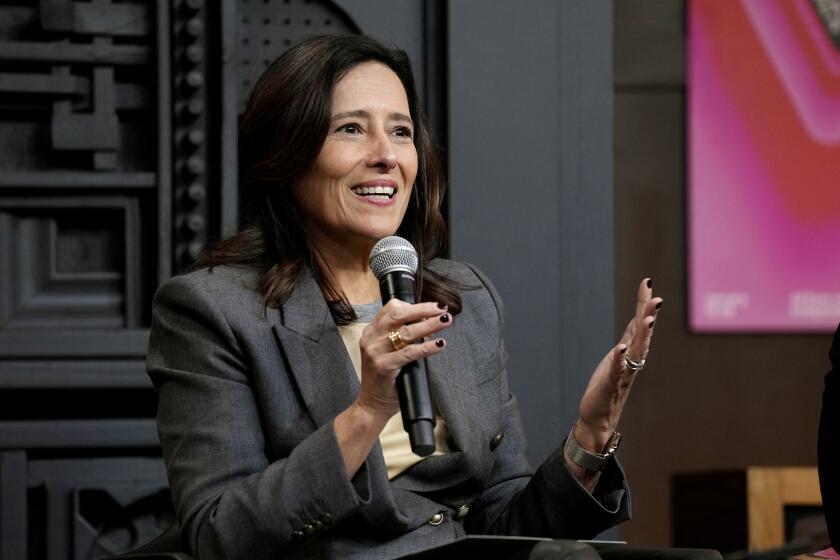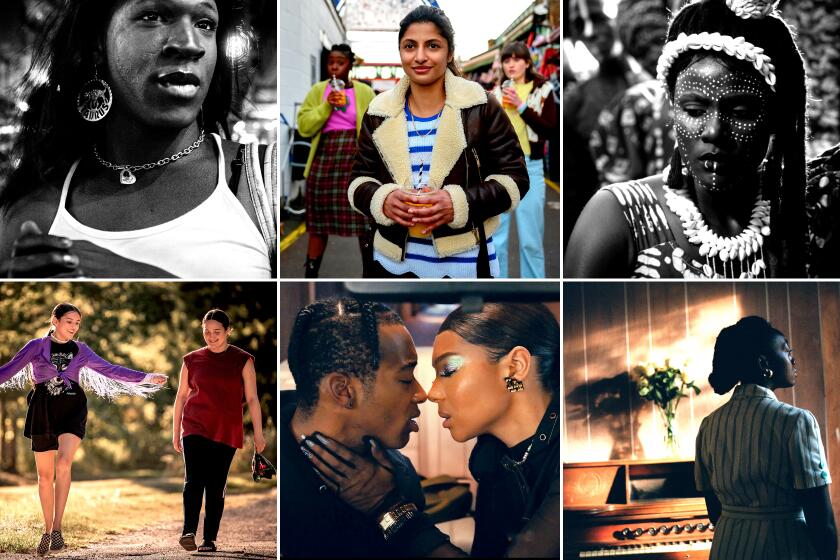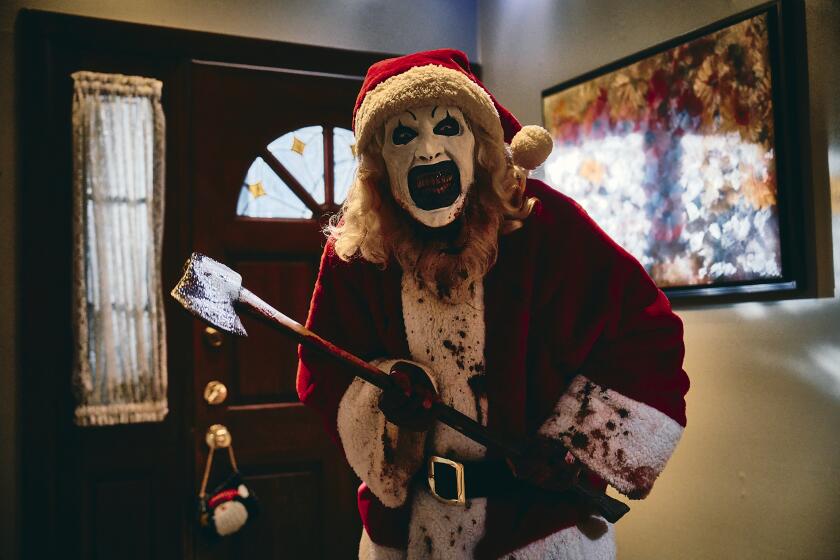What’s a movie shot on a set with a cast doing in Sundance’s documentary competition?
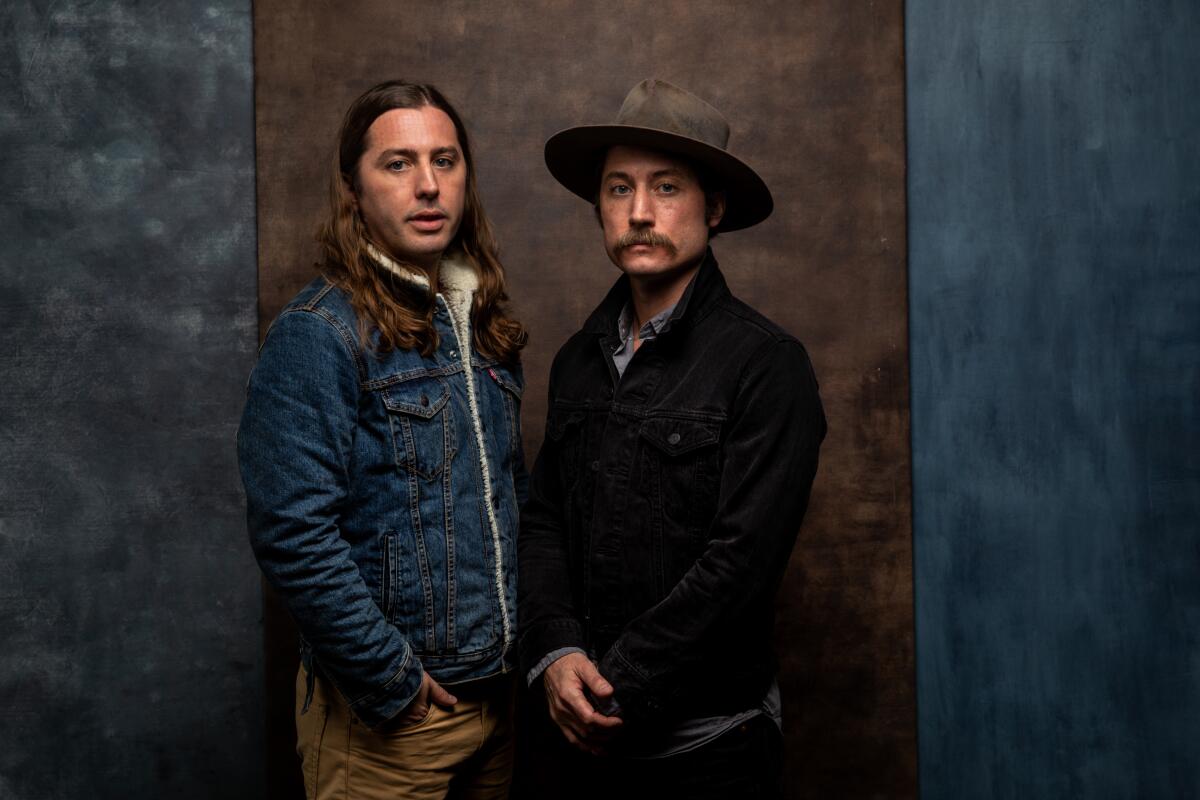
PARK CITY, Utah — The Ross brothers don’t have anything to hide. They want to be as transparent as possible about the way they made their new movie, “Bloody Nose, Empty Pockets.” So this is how they made it:
In November 2016, Bill and Turner Ross rented a bar in New Orleans called Roaring 20’s. Use of the location cost them the majority of their $10,000 budget. The day after Donald Trump was elected, they told the 22 people that they’d cast for the project to show up at the bar. These people were not actors. They were people the filmmakers had met at other bars, people who had relationships with alcohol.
And when these people arrived at the filming location, where they’d all spend just one day, they were given this direction: Pretend the bar is closing at the end of the night.
Over the course of the day, the Rosses — the only two camera operators inside the bar — gave little other instruction. They filmed as their cast, who had never met one another prior, laughed, cried, flirted, slept and got very, very drunk.
But if you showed up to watch “Bloody Nose, Empty Pockets” at this year’s Sundance Film Festival after only reading the description of the film in the program guide, you would not know any of this. That’s because the movie premiered in the festival’s U.S. Documentary competition, where it was described as a film about the regulars at a Las Vegas dive bar coming to grips with its shuttering.
“That’s the premise, at least; the reality is as unreal as the world they’re escaping from,” the Sundance material reads, only hinting that the film isn’t exactly nonfiction.
Bill, 39, and Turner, 37, did not expect the movie to end up in the documentary category. But after they submitted it to Sundance last year, the brothers said that festival programmers “petitioned” them to include it in the nonfiction section.
“We said, ‘OK, if this is what you want to do, let’s have a conversation about what we actually did here, because we’re not gonna lie about anything. That’s bull---- and gets in the way of what we’re trying to do,’ ” explained Turner, the mustachioed brother who rarely takes off his flat-brimmed western hat. “So we told them about it, and they said, ‘That is more exciting. We still want to move forward.’”
The decision has upset some documentary purists, who argue that it is unfair for the film to compete against other nonfiction movies that were created without any artificial premise. Others have rushed to the defense of “Bloody Nose, Empty Pockets,” pointing to other reality-narrative hybrids that have been included in the documentary competition in years past, including 2016’s “Kate Plays Christine” and “Casting JonBenet.”
Harry Vaughn, one of Sundance’s programmers, wrote in an email that he and his colleagues decided the film belonged in the documentary competition because “it constructs situations in order to invite a level of chaos and candor that feels more fitting for the nonfiction space.”
“We were fascinated by the boundaries they pushed in ‘Bloody Nose,’ and how they playfully confront and subvert our assumptions of what truth and reality should look like in film,” Vaughn continued. “There’s real life, real scenarios happening in ‘Bloody Nose,’ much of it in real time. It simply exists within a constructed setting. It pushes us to consider what the nonfiction sphere can look like in the most unconventional of ways.”
The Rosses began thinking about the idea for the film in 2009. Back then, they were envisioning creating their version of the 1984 documentary “Streetwise” on the outskirts of Sin City. Their father was a gambler, so the brothers spent a lot of time in Vegas and subsequently became fascinated by how the recession was changing the landscape of the city. They thought the place seemed like a metaphor for American excess and escapism, and liked the idea of capturing it all in one room.
So they scouted endless bars, looking for the right atmosphere and community of characters. But no place was exactly right. Turner likens the experience to the George Orwell essay “The Moon Under Water,” in which the author talks about the 10 things that make a great bar — but then says he’s only ever found a bar with eight of those characteristics.
“But it did seem like something we could manifest, because really these are just oases that people are trying to find,” Turner said. “Especially in Vegas: Why in this oasis are you looking for another oasis? Why in the bright light are you trying to find the darkness? Why can you put strange people together in a place and they immediately find a bond and a commonality — choose sides, create dynamics. Why can you go to an airport bar and hear somebody’s life story in the time it takes for a layover?”
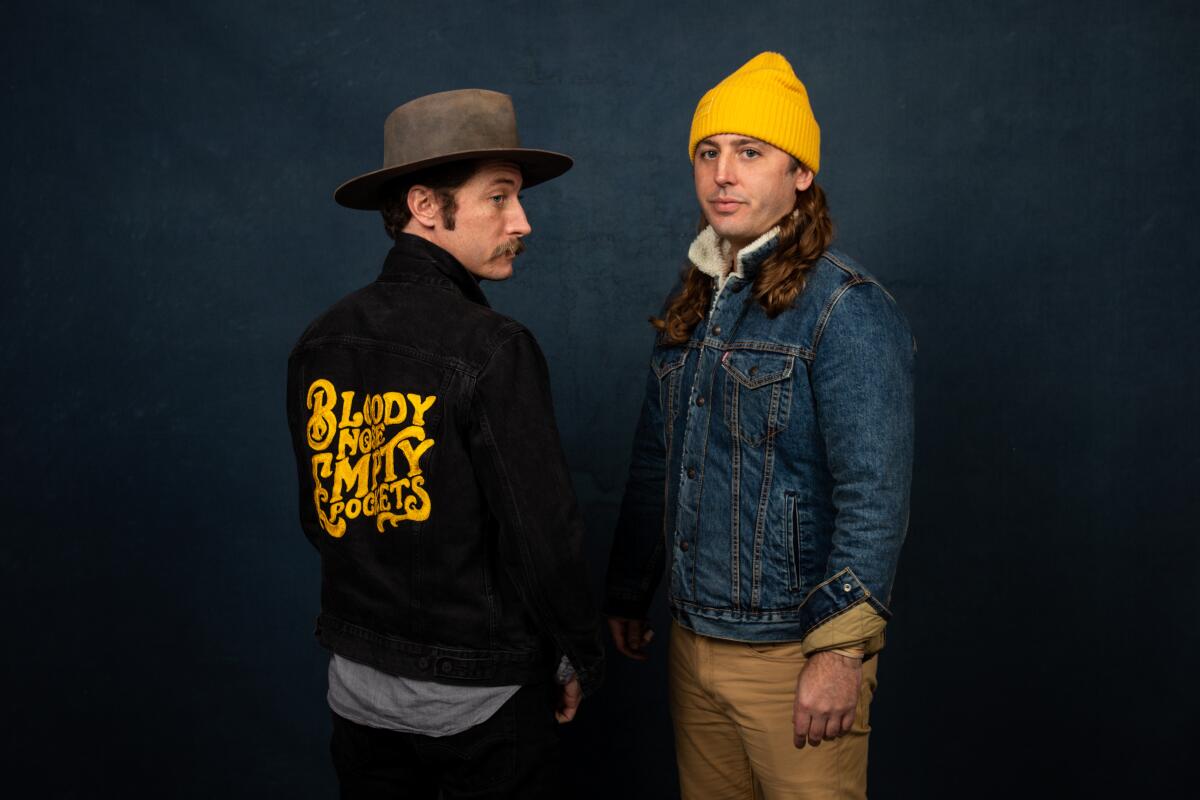
The brothers, who moved to New Orleans after a stint in Hollywood more than a decade ago, have always been fans of dive bars. (Bill, the long-haired brother, used to frequent Hank’s Bar in downtown L.A.) They both drink — during this interview, they were sipping on Campari cocktails that had been offered to them at 11:30 a.m. — and Turner says alcohol is “a world we are very familiar with.”
So when they were searching for people to appear in their film, they wanted to find individuals who had real connections to watering holes.
“We’d go up to people, offer to buy them a drink and ask: ‘What does a bar mean to you? Why do you come to a bar? What do you get out of it?’” recalled Bill, who said he and Turner spoke with hundreds of potential subjects before settling on the final cast.
Ultimately, they settled on a motley crew of characters that included a war veteran, a drag queen, a character actor and a truck driver. Right before shooting began, Turner said, he and Bill told them: “‘You are here for a reason: Because you are you. So however you want to show up to that — whoever you want to bring to that — just come and be yourself within that.’ And they were incredible.”
Over the course of the 18-hour shoot, “There were certainly nudges here and there,” Bill admitted. “If they got on a topic for way too long, we’d be, like, ‘All right, guys. Let’s move on from that.’ ”
They also had to intervene when a few people got too drunk. At one point, one cast member got so intoxicated that she fell over.
“There were a couple of instances where we were like, ‘OK, maybe it’s time to go.’ It made us uncomfortable, so we got them out of there,” said Bill, noting that there was a support crew outside to offer people rides, food and water.
“But at the same time, that’s part of the sincerity of this,” added Turner. “There was a lot that we could have put in the movie that we didn’t. We don’t want to exploit or embarrass anybody. Like, when Pam falls, it’s not a joke. Pam falls down because Pam has had too much to drink. But we’re not there to watch Pam fall down, we’re there to watch Pam get picked up. The bar comes to her rescue and picks her up and ... makes sure she gets home. It’s this family they’ve built, and the idea of that.”
If they’d gone to a real bar over the course of a few months, creating a document of a space over time, the filmmakers believe that kind of raw emotion wouldn’t have surfaced. But when they’re asked where their movie fits into the documentary genre, the brothers tense up.
“What is documentary?” Bill said, pausing for a while. “Hoo boy. I don’t know. We never really talk about it.”
“It’s just not really the conversation that I want to have,” Turner said, growing somewhat defensive. “There’s certainly an interesting conversation to be had. Do I want that to be our lead conversation? Absolutely not. I mean, again, that’s just not what I want to get bogged down in — but it is a documentary. There is great truth in this. ... In a composed scenario like this, perhaps some of it is prescribed, but these are still authentic portrayals of these people by these people, and that’s what’s really interesting to us.”
Sundance obviously shares that perspective. As Vaughn put it: “In a superficial sense, there is obviously fiction in its structure, but to call it a fiction film over a nonfiction film would be to miss out on the main point of their experiment. They’re solidifying moments of reality we wouldn’t otherwise see if they weren’t padding in elements of set-up. Basically, to get to truth, you have to use construction, is what their logic feels to me.”
Anyway, the Rosses aren’t interested in pleasing the masses. They ultimately left L.A., Turner said, after realizing that gigs cutting trailers for movies including “Miami Vice” and “realizing other people’s dreams” for paychecks wasn’t creatively fulfilling. In New Orleans — where Turner lives with his wife and 6-year-old daughter and Bill with a long-term partner — they make ends meet largely by working as cinematographers on other projects.
“It’s historically been very hard for us to get financing up front for things we want to do, so we gotta fill the coffers the other way,” Turner said.
“But I see what our other buddies go through, and I want no part of that. Too many cooks in the kitchen,” Bill said of working on larger-budget projects.
“Art by committee,” Turner added. “For us, we’ve built a language together and we’d like to continue that. Each film, we learn something new and explore that and try to go further with that. I don’t think a big-budget Hollywood movie is what’s next, but we’ll see. I’d love $5 million. I’d make a lot with that. We’d just be able to pay the crew up front, pay the bills at home, dream a little bigger.”
More to Read
Only good movies
Get the Indie Focus newsletter, Mark Olsen's weekly guide to the world of cinema.
You may occasionally receive promotional content from the Los Angeles Times.



